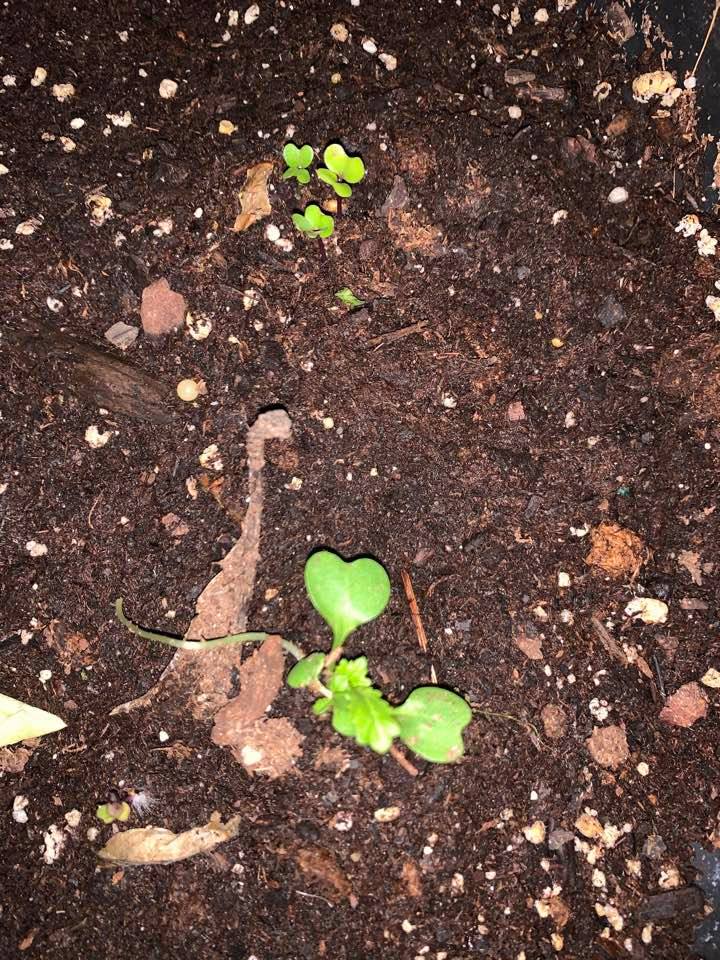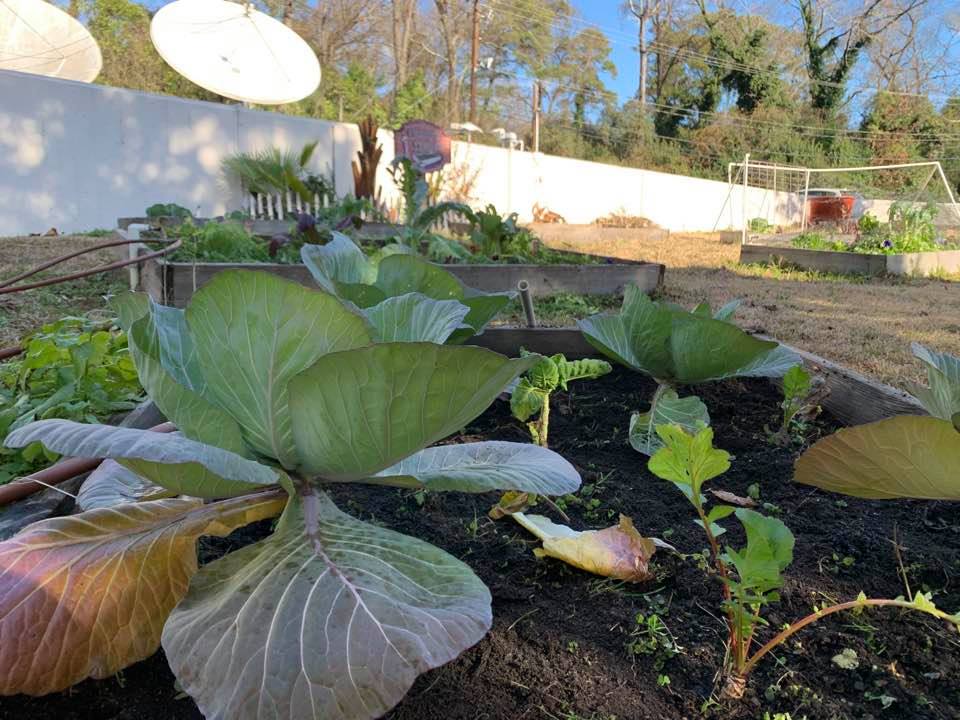I’ve been so busy in the garden the past few months, and I think I earned a little break. I still want to see plants though – that’s where the winter garden comes in! Unlike the summertime, there’s no need to worry about watering, bugs, weeding or fertilizing this time of the year. Talk about a relief! The only variable in the winter garden is extreme cold, and that affects some plants more than others. So I decided this year I’m not going to cover my beautiful greens with a frost cloth so I can see which plants are the most cold tolerant and ultimately the lowest maintenance. I’ve made some interesting observations that will help any gardener extend their growing season with little effort!
Gardening isn’t just for summertime
When I grew up in New York, I thought gardens could only be productive during the warm and frost free days of summer. I had no idea how incredible winter gardening is until I moved to South Carolina and witnessed it for myself. Plants really struggle in the hot and humid weather here during the summer time, and the plants that can handle our weather often succumb to fungus and bugs. Winter in South Carolina is far from frost free (the average winter morning in Columbia drops into the 30s!), and yet I’m growing dozens of plants. Whether you’re a southern gardener looking to garden during the cool months, or a northern gardener looking to extend the growing season on the frosty fringes of spring and fall, here’s my breakdown on what plants are most reliable.
The winter garden at 25F
Some lettuce varieties are unreliable when temperatures drop below 25F. Romaine seems to be particularly sensitive. These plants began to show signs of damage at 25 degrees and at 20 degrees, I lost about 70% of the romaine lettuce. Cauliflower and broccoli plants survived temperatures down to 25F, but the budding florets were destroyed at these temperatures. Last year I covered the lettuce and cauliflower with frost cloths at 25 degrees and there was no damage.
The lettuce and cauliflower plants in milder parts of the yard survived 20F (our coldest morning so far this winter) without protection. Bibb lettuce had no damage even in the cold parts of my yard. That was a really pleasant surprise! Some of the fancy leaf lettuce varieties (I was not given a cultivar name) also survived our coldest morning without any problem. There are some varieties of lettuce that are reportedly reliable down to 10F temperatures. That should give a lot of gardeners up north (and here in the south) some hope!
What happened at 20F

Cauliflower and broccoli plants received a lot of damage during our coldest morning of the winter so far which was officially 20F in Columbia, SC. A few of my broccoli and cauliflower plants survived the deep freeze, but most appear to be a total loss.

I’m happy to report many plants survived our coldest morning so far this winter without any issues. Kale, cabbage, pansies, arugula, and cardoon suffered no foliage burn. Parsley and cilantro had a little cosmetic damage, but suffered no major issues. My parents’ parsley plants in New York City are still green in January too, and that’s after 6 inches of snow and 19F. I have no worries about those in South Carolina! The lettuce varieties I mentioned above like the bibb, fancy leaf, and a few lucky romaine plants managed very well through this hard freeze.
The results:
| Cauliflower | 70% loss at 20F. Damage begins at 25F |
| Lettuce | Romaine was 70% loss at 20F. Damage begins at 25F. Some varieties like Bibb proved more cold hardy |
| Parsley | A little tip burn at 20F. Probably not cold hardy reliably much below 20F, but survived 6 inches of snow in my parents NYC yard and remains green in January. |
| Cilantro | No damage at 20F. It could be more cold tolerant than parsley in the garden. |
| Kale | No damage at 20F. Completely winter hardy in South Carolina. |
| Cabbage | No damage at 20F. Completely winter hardy in South Carolina. |
| Brussels Sprouts | No damage at 20F, but the sprouts may be more cold sensitive. I’ve heard gardeners mulch the stems to protect sprouts in cold climates. |
Seeds that germinate outside in the winter
Winter is a great time to sow seeds in the ground for the early spring garden. I replaced the cauliflower with new seeds and they’re already sprouting despite temperatures in the 50s during the day with nights in the 30s. I planted kohlrabi and broccoli rabe seeds with the cauliflower and had successful germination on those as well. I started arugula seeds in November and now I have leaves to pick for my January salads! I sowed spinach and lettuce seeds on my porch in early January and an expecting those to be ready for picking in March. My arugula seeds sprouted beautifully and after 2 months are ready to be picked. I started snow peas from seed in the fall. The plants germinated but haven’t grown much in recent weeks. They appear to be dormant right now, but were completely unharmed by the 20F weather.



I’m excited for spring, but the winter garden is something special too!




Awesome Garden! Great Hobby. 👍🏻
Cabbage and Broccoli just healthy Vegetables. 👌
LikeLiked by 1 person
Thank you!
LikeLiked by 2 people
A good, helpful report! Thanks.
LikeLiked by 1 person